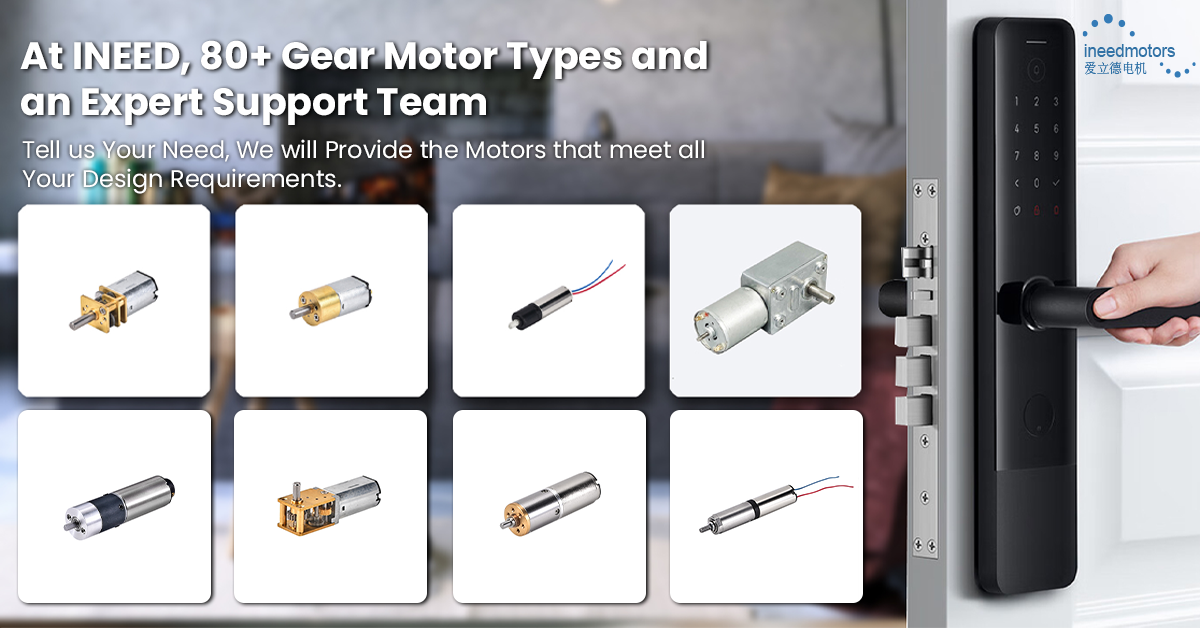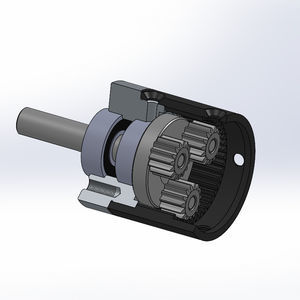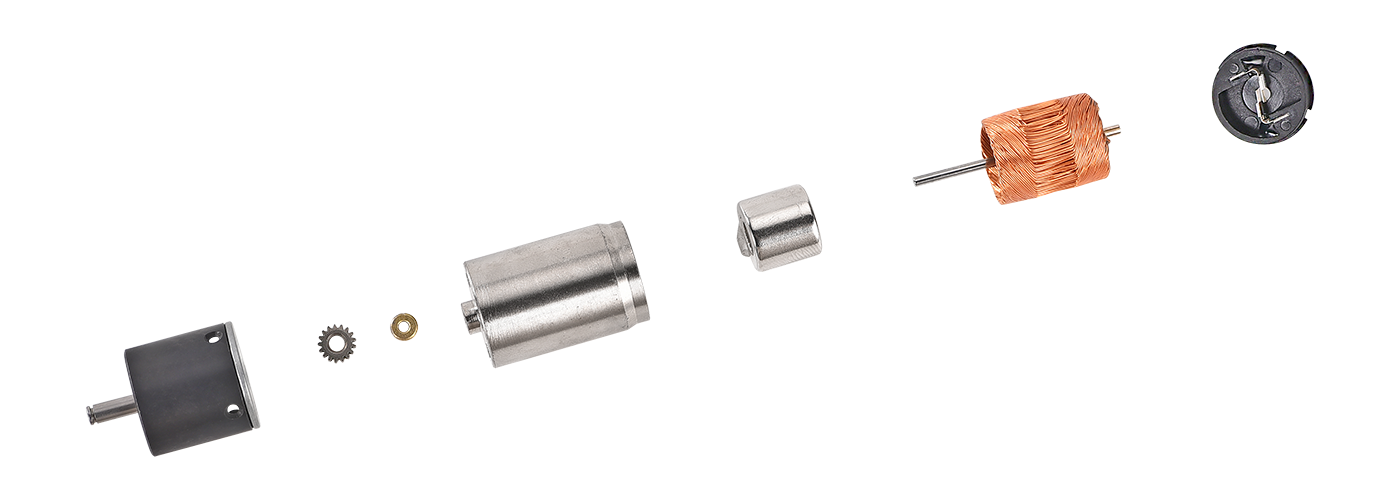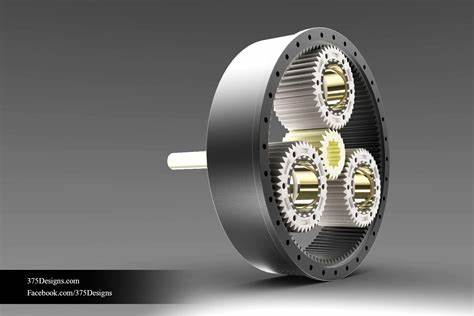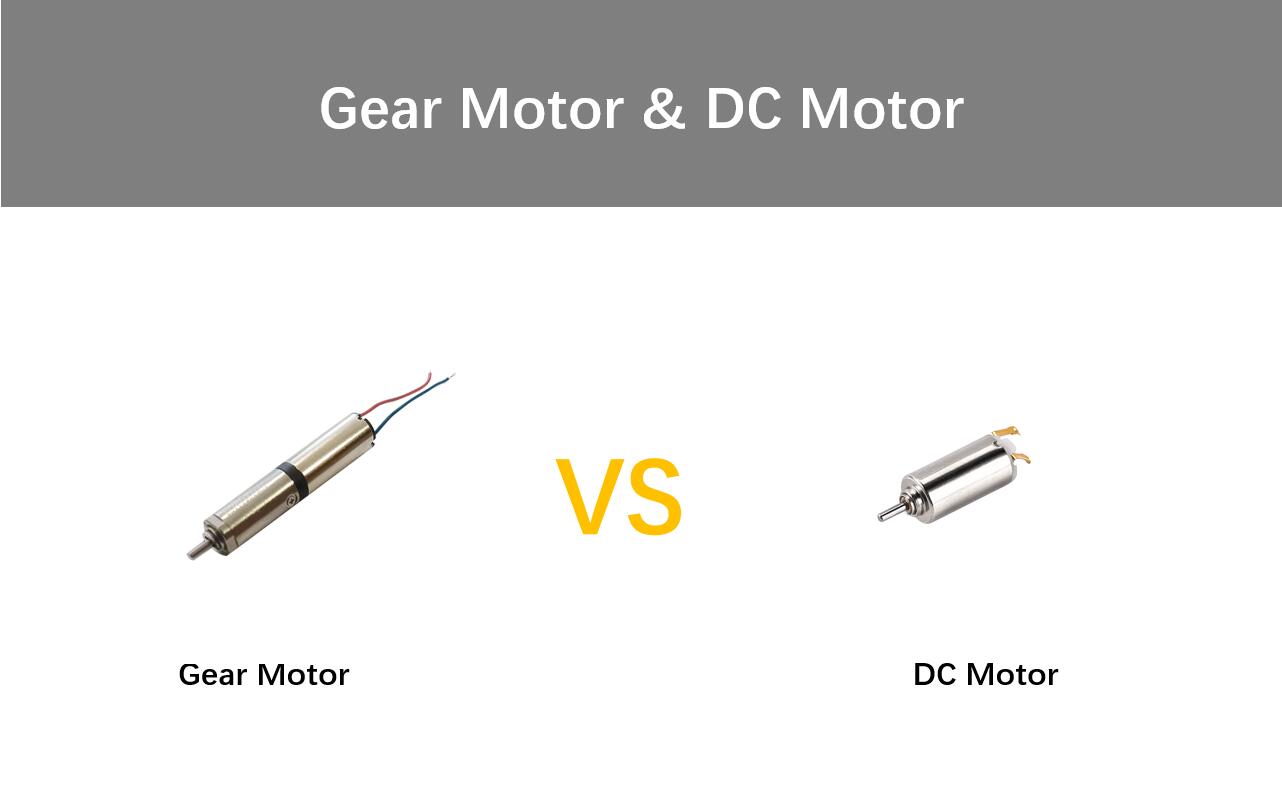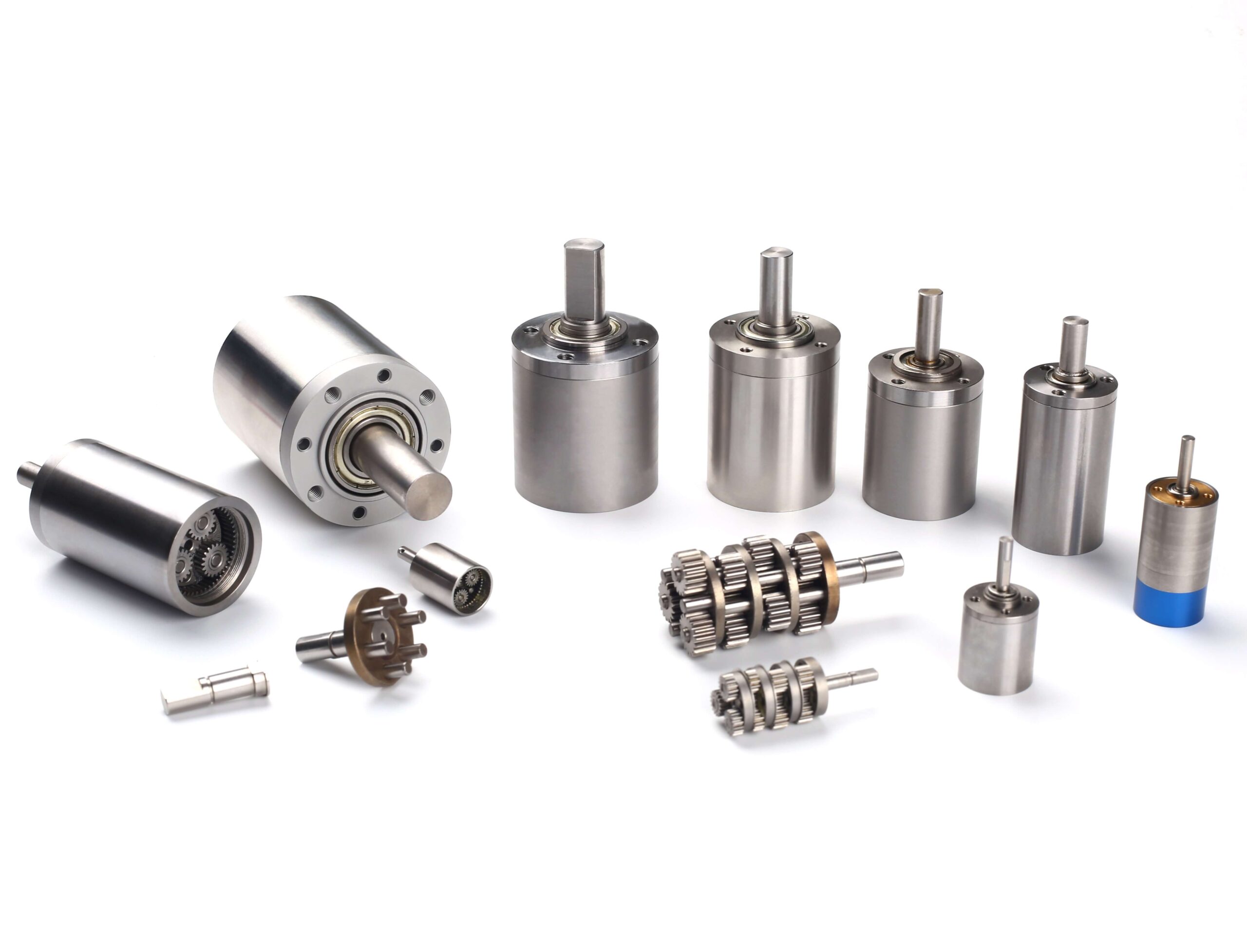The difference between a gear motor and a DC motor is a very common question, and similar topics have been shared in our previous articles. Here we once again from the structure of the gear motor and DC motor, speed and torque, application product range and other 5 points to explain the difference between them.
The Structure
The gear motor is an all-in-one combination of a DC motor and gearbox. It is characterized by a gear box. This gear box is attached to the motor and plays a key role in regulating the motor output speed and torque. The gear motor can effectively change the torque and output speed. The gearbox, as a transmission, is mounted on the motor, allowing the speed to be flexibly increased or decreased depending on the transmission ratio. With its advantages in low speed and high torque, the gear motor provides a reliable solution for specific applications.
DC motors: DC motors or ordinary motors, often referred to as standard motors or non-geared motor, provide constant speed and torque. A direct current motor is an electric motor that uses direct current (DC) to generate mechanical force, the most common type relying on the magnetic force generated by the current in the coil.
The Speed and Torque
Gear motor: The gear mechanism in a gear motor allows a reduction in speed while increasing torque. This is advantageous in applications where high torque is required, such as in conveyor systems or certain robotic applications.
DC motors: DC motors typically run at a consistent speed and may not provide as much torque as a geared motor. They are suitable for applications with sufficient consistent speed and moderate torque.
Product Application is different
Geared motors: Commonly used in applications that require precise control of speed and torque, such as industrial machinery, conveyor systems, robotics, and automotive systems.
DC motors: Used in applications where constant speed is sufficient, such as industrial products, consumer electronics, and some small appliances.
Size and Weight
Gear motors: The addition of gear boxes makes gear motors generally larger and heavier than DC motors with similar power ratings. However, they offer advantages in terms of torque and speed control.
DC motor: Because there is no gearbox on the DC motor, it is usually more compact and lighter than a geared motor with the same power rating.
Efficiency
Gear motors: In some cases, gear motors can be more efficient in terms of power transmission because they allow the motor to operate at optimal speed while providing the necessary torque through gear reduction.
DC motors: Efficiency depends on the specific type and design of the motor, but without a gear reduction mechanism, it may be less effective in applications requiring lower speeds and higher torques.
Summary
The main difference is the inclusion of a gearbox, which enables the gear motor to provide variable speed and increased torque, making it suitable for different applications compared to DC motors. The choice between the two depends on the specific requirements of the application.
Resource:
https://islproducts.com/design-note/dc-motor-dc-gear-motor-basics/

